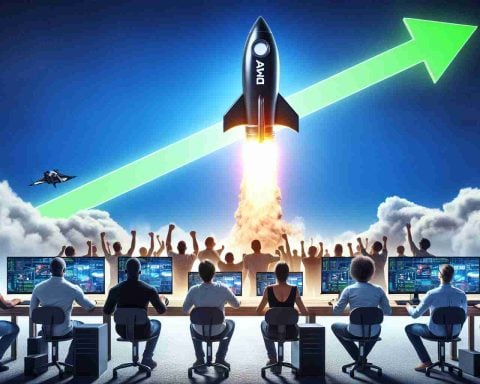The Royal Air Force (RAF) is embarking on an innovative project to enhance its pilot training programs. In collaboration with BAE Systems and under a contract with the UK Ministry of Defence, the RAF is set to explore the potential of using augmented reality (AR) in increasing the number of fighter pilots deployed on the front line.
The project will involve the integration of advanced tactical augmented reality systems (ATARS) onto the Hawk TMk2 aircraft. Developed by US-based company Red 6, ATARS enables pilots to detect, engage, and defeat virtual enemies that are programmed to mimic real combat situations.
Through the AR display, Hawk pilots flying over the UK will have a new level of situational awareness. They will be able to see virtual aircraft, including other Hawks flying nearby, as well as enemy fighters displaying hostile intent. This technology aims to provide pilots with realistic training scenarios and more accurate combat simulations.
By demonstrating the interoperability and capabilities of this advanced technology, the RAF will evaluate the suitability of AR for its future flight training strategies. This project represents a crucial step towards incorporating AR into pilot training, potentially revolutionizing the way pilots are prepared for combat operations.
The successful delivery of the contract by the Hawk Delivery System team in the Defence Equipment and Support Division of the UK Ministry of Defence’s procurement arm showcases the commitment to advancing technological capabilities within the RAF.
This innovative approach to pilot training highlights the importance of staying at the forefront of technological advancements in the aviation industry. By embracing augmented reality, the RAF aims to enhance its pilot training programs and equip its fighters with the necessary skills and expertise for success on the front line.
Additional Facts:
1. The Hawk TMk2 aircraft is currently used by the RAF for advanced pilot training.
2. Red 6, the US-based company developing the advanced tactical augmented reality systems (ATARS), specializes in augmented reality training and simulation solutions for defense and aerospace.
3. The integration of ATARS onto the Hawk TMk2 aircraft will involve hardware modifications to incorporate the augmented reality display system.
4. Augmented reality technology overlays virtual objects onto the real-world environment, enhancing the user’s perception and interaction with their surroundings.
5. The use of augmented reality in pilot training is not new, with other countries and organizations already exploring its potential benefits.
Key Questions and Answers:
1. How does augmented reality enhance fighter pilot training?
Augmented reality provides fighter pilots with a more realistic and immersive training environment. It allows them to visualize virtual aircraft and enemies, which enhances situational awareness and improves their ability to respond to combat situations effectively.
2. What are the advantages of using augmented reality in pilot training?
– Realistic Training Scenarios: Augmented reality enables pilots to experience realistic combat scenarios without the need for physical resources or risks associated with live exercises.
– Improved Situational Awareness: Pilots can visualize virtual aircraft and enemy fighters, enhancing their understanding of the battlefield and potential threats.
– Cost and Resource Efficiency: Augmented reality reduces the need for extensive physical training infrastructures, making training programs more cost-effective and accessible.
3. What are the challenges or controversies associated with augmented reality in pilot training?
– Validation and Accuracy: Ensuring that the virtual environments and scenarios accurately reflect real-world combat situations is crucial for effective training.
– Technical Reliability: Augmented reality systems must be reliable, with minimal downtime or technical issues, to ensure uninterrupted training sessions.
– Adaptation and Training: Pilots and trainers need to learn how to effectively use augmented reality systems, adapting their training methodologies accordingly.
Advantages:
– Enhanced Situational Awareness: Augmented reality provides a realistic and comprehensive view of the battlefield, improving pilot decision-making and response capabilities.
– Realistic and Immersive Training: Virtual enemies and scenarios make training more realistic, ensuring pilots are better prepared for combat operations.
– Cost and Resource Efficiency: Augmented reality reduces the need for extensive physical training infrastructures, saving costs and resources.
Disadvantages:
– Technical Challenges: Augmented reality systems may face technical issues, which can affect training sessions and reliability.
– Learning Curve: Pilots and trainers need to learn to effectively utilize augmented reality systems, requiring additional training and adaptation.
– Maintenance and Upkeep: Augmented reality systems require regular maintenance to ensure optimal performance and longevity.
Suggested Related Link:
BAE Systems – UK RAF augments reality in US experiment






















